This post was contributed by LiveAgent, a live chat and help desk solution.
Customer engagement is the key to retaining customers, keeping them loyal to your brand, and increasing sales. In this article, we’ll outline 7 different strategies that you can utilize to start improving engagement today. But first, what is customer engagement?
What is Customer Engagement?
Customer engagement can be defined as all the interactions between a customer and your business. However, each business considers different interactions as engagement.
For example, one B2B business might consider opening emails and clicking on links as engagement, while another B2B business might consider engagement to be signing up for a free trial of their product.
Therefore, it’s up to you to decide what you consider to be engagement. Once you define what qualifies, it’s easier to decide which strategies should be implemented to improve it.
Why is Customer Engagement Important for Your Business?
Customer engagement is important for every B2B eCommerce business because it can:
- Indicate how well your business is doing
- Predict future trends in cash flow, churn, and retention
How to Measure Customer Engagement

[Source]
Because engagement is different for each business, it can be measured through various metrics. The most common are outlined below.
Activity time
Activity time is a metric used to measure customer engagement in B2B SaaS businesses. The metric represents the amount of time a user spends interacting with your product. It’s measured by calculating activity time per session, minus idle time.
Visit frequency
Visit frequency is the number of times a user visits your product or service in a given period of time. This metric can be tracked by monitoring individual session IDs on your website or by calculating the number of times that a user logs in to your software.
Purchase frequency
The purchase frequency represents the number of times a customer makes a purchase in your store. It’s calculated by dividing the number of orders in the last 365 days by the number of unique customers over the last 365 days.
Average order value
The average order value represents the average amount of money a customer spends when shopping at your store. To calculate it, divide the total revenue over the last 365 days by the total number of orders placed in the last 365 days.
Repeat purchase rate
The repeat purchase rate is the percentage of customers that have made more than one purchase at your store within a specific period of time. To calculate it, divide the number of customers that shopped with you more than once by the total number of customers.
7 Tips to Improve Customer Engagement
Now that we know what customer engagement is, why it matters, and how to measure it, it’s time to show you how you can improve it and increase sales at the same time. Let’s get started!
Use customer engagement tools
As you know, creating meaningful and personalized interactions is a must if you want to improve engagement and sales. To do that, you need to get to know your customers.
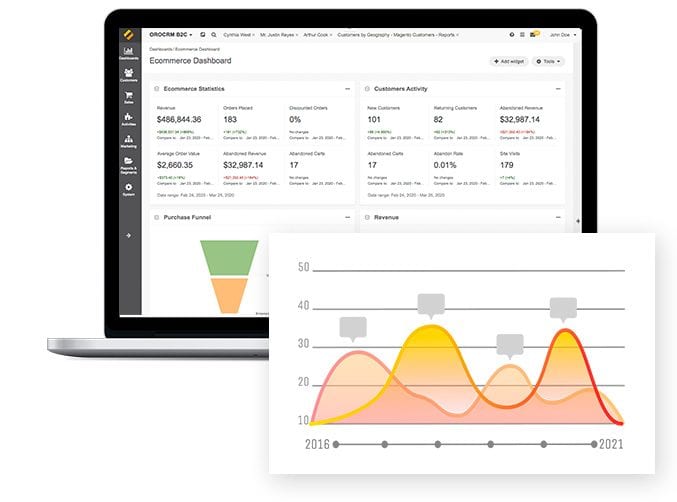
Our recommendation? Implement a dynamic CRM software that captures customer engagement data from as many channels as possible (online stores, marketplaces, call centers, social media, etc.) With the right CRM software, you can create a holistic view of each customer and make the most out of every sales opportunity.
Create loyalty programs
One of the easiest ways to keep your customers engaged is by creating loyalty programs. However, to be effective, loyalty programs must offer their customers perks that incentivize staying loyal to your band.
These perks can be pretty much anything you can think of, from discounts, to free shipping or early-bird sale access. The more incentives you offer, the more likely your customers are to stay loyal to your business and make repeat purchases.
One example of a successful B2B loyalty program is HP’s Planet Partner Rewards Program. The aim of the program is to reward companies for returning used HP ink cartridges, which are then safely recycled by HP. For each returned cartridge, businesses gain points that can be redeemed at any HP store or HP reseller for more HP accessories.
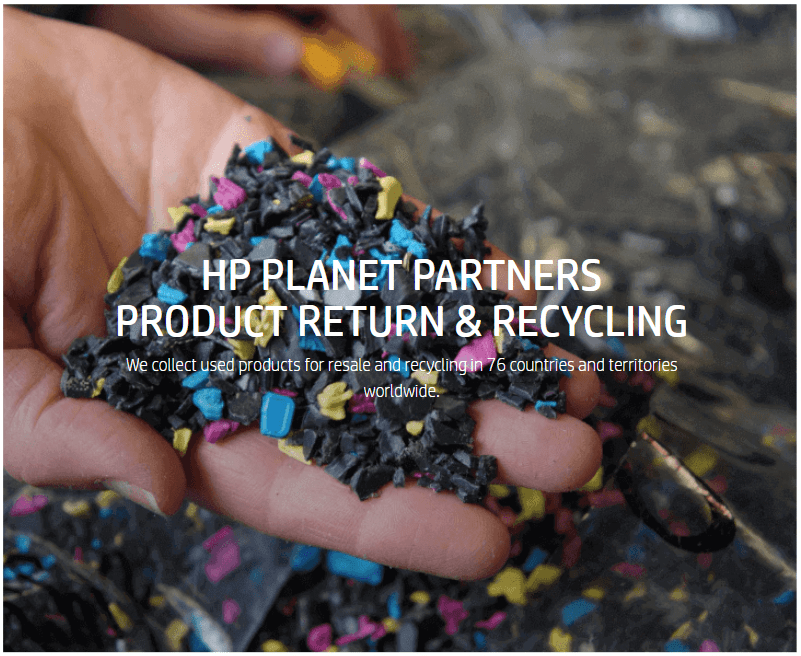
[Source]
Connect on social media
Connecting with your fanbase on social media is a great way to improve customer engagement. You can do so by posting content that’s valuable to your users, such as blog posts or eBooks that answer your customer’s most common questions.
However, whenever you’re on social media it’s important not to come off too salesy, or your customers will be turned off. Get inspired by IBM or Cisco, who are killing it across different social media channels. They’re getting their audience to interact with them by asking questions, posting the occasional meme, and content that provides value.
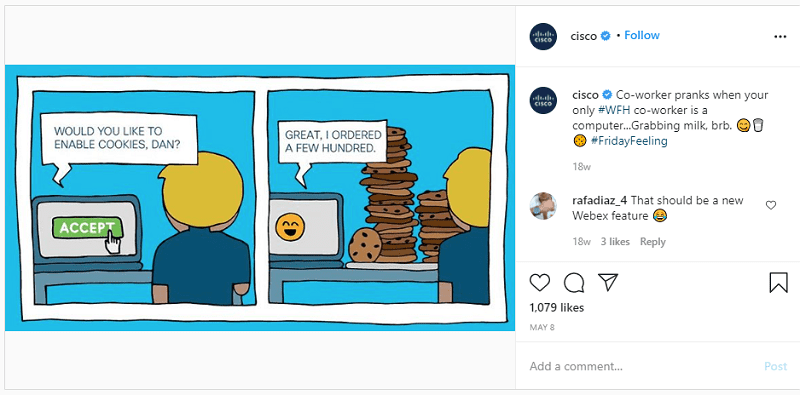
Target and segment your audience
Segmenting your audience into different groups will allow you to engage with your customers more effectively. Each customer is different, and thus has different motivations for purchasing your product. Therefore, it’s necessary to nurture the individual needs of your clients through different strategies and channels.
One marketing strategy will work for a handful of clients, but not your whole customer base. Again, that’s where the right type of CRM system can help.
VIP customers
Have you heard of the Pareto 80/20 rule? It can be applied to sales as well, in the sense that 20% of your customers make up 80% of your sales. Although this might not be true for every B2B business, sometimes you land a huge client that needs more attention. I’m not saying that you should treat other customers poorly, however, you should treat your VIPs, like VIPs.
As such, it’s important to cater to their needs, personalize all communication, provide them with extra perks, and assign a dedicated success manager to monitor their engagement. With a success manager in place, you’ll know when’s the right time to cross-sell, up-sell, or provide extra support to your client.
Free trials
The next VIP customer segment are your free trials. This customer group needs to be nurtured so they take the next step and become a paying customer. So how can you move them along the sales funnel effectively?
Get to know their needs. Find out what they want to achieve, and show them how your product can aid them on their journey. Keep reminding them through personalized communication across different channels, however, be wary of being too pushy.
If you’re too pushy, they can feel turned off, and abandon your product altogether.
Be on the right platforms
The key to engaging with your existing and potential customers is to be present on the right platforms. Think about it like this: if you’re not present where they are, how can you engage with them?
Research which social media platforms they’re on, post actively, respond to queries, and showcase your brand’s personality.
Listen to your audience
There are tons of platforms that your customers use to express themselves. Regardless of the channel they use, acknowledge their feedback and suggestions.
Thank them for their input and if applicable, consider implementing it. After all, happy customers = successful business.
Grow an online community
Growing an online community can do wonders for your customer engagement. Just look at Apple. Whenever you Google a question about your Apple product bugging out, the Apple forum pops up as one of the first search results.
The forum is filled with questions and answers posted by Apple users. If a question is left unanswered, an official Apple representative steps in and provides an answer.
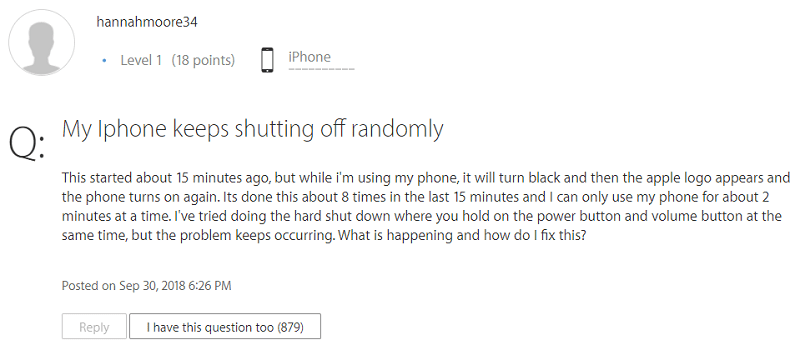
[Source]
Growing an online community is great because it shows that your brand cares about its customers. It provides a platform where they can express themselves, ask questions, post suggestions, and find-like minded individuals. This leaves your customers feeling accomplished, listened to, and valued.
Create mobile apps
Engaging with your product can be easy from the comfort of your customer’s home, but is it just as easy on the go? By creating a mobile app that has the same functionality as your software, or somehow complements your product is a great way to get your customers to engage with your business through a different channel.
If creating a mobile app is too challenging because of time and money constraints, consider creating a progressive web app (PWA). PWAs are becoming increasingly popular: they are web-based apps that function just like native mobile applications. Pinterest.com, Uber.com, and Starbucks.com are just a few examples of PWAs.
Create personalized interactive content
By producing educational interactive content, you’re more likely to engage your customers. Consider this Tweet from Apple’s Customer Support.
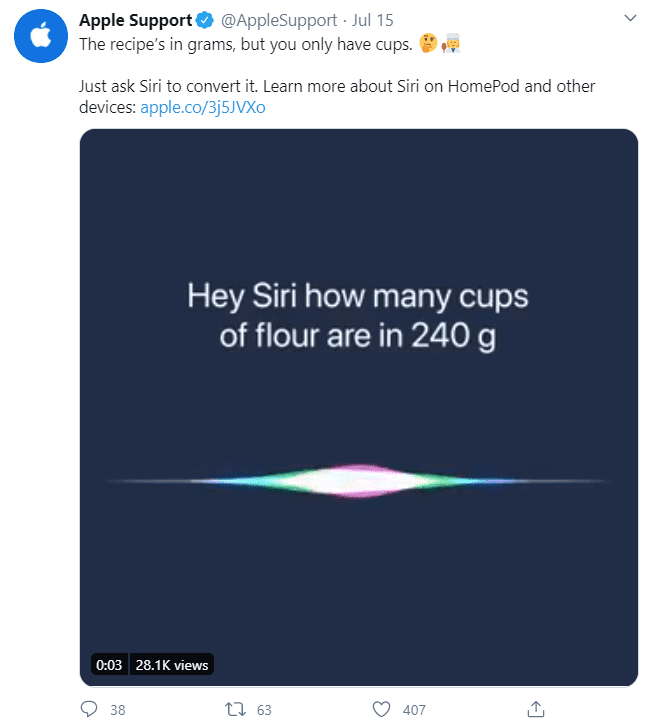
[Source]
When you find out that Siri can convert grams to cups, you become curious and want to know what else Siri and HomePod can do. As such, you’re more likely to click the link inside Apple’s Twitter post, which is exactly what Apple wants.
Interactive content is all the new rage (popular) and should be present in social media posts, email marketing campaigns, and on your website. If your product is software, don’t hesitate to include an interactive tour/guide inside your software as well.
Improve customer support
If your product or software is faulty, your customers won’t want to use it. Therefore, to keep engagement high, it’s important to ensure you’re providing your customers with the best quality possible. However, even if you have the best product or software with the most uptime, you’ll encounter customers that will need assistance. Try to use live chat/help desk solution to improve your customer support.
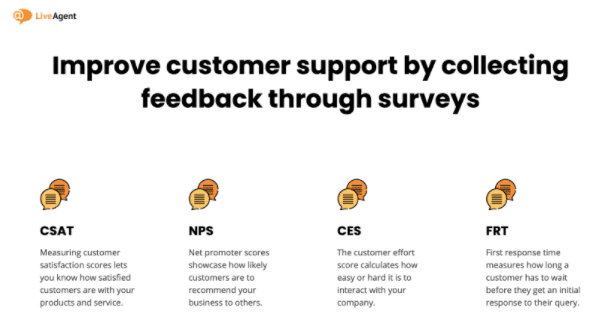
Customer-centric culture
Creating a customer-centric culture within your business is the best thing you can do to increase engagement and in turn, sales.
With every customer interaction, your customers should feel valued, appreciated, and listened to. When you make them feel like you’re there to help them, and not take their money, they’ll trust your business more.
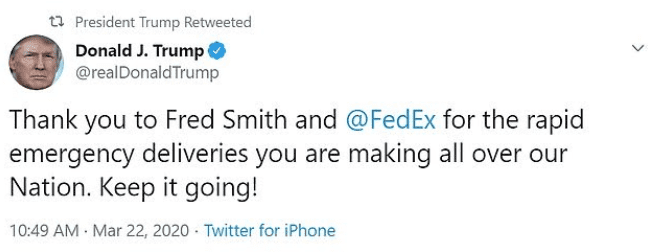
In turn, they’ll be more likely to become loyal brand ambassadors that recommend your business and products to others.
Respond promptly
Do you know how long it takes for you to answer customer calls, emails, live chats, or social media messages? If you don’t it’s time to find out. Why? Because the faster you answer your customers, the more revenue you generate.
Customers are impatient and aren’t willing to wait to get answers to their questions. If it takes you 45 minutes to answer a call, but your competitors can answer in 2 minutes, it can be a deal-breaker.
In Conclusion…
The key thing to remember here is that improving customer engagement is an on-going process. You can’t stop once you reach a designated metric, because your engagement will drop. It’s a never-ending process that can be compared to maintaining a healthy diet and staying fit.
Therefore, to keep your customers engaged, interact with them through various channels, keep all communication personalized, and make them feel valued through incentives and stellar customer support. If you do, your customer’s satisfaction will increase, as will your sales and revenue.



